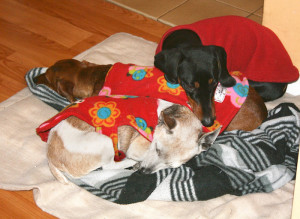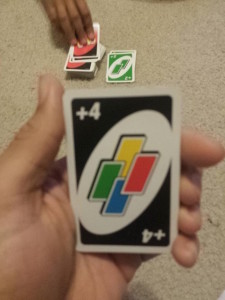Write Content Worth Reading: 3 Listicle Hacks from the Pros
September 11th, 2015 by
Listicles have infiltrated our culture with a gusto that can only be compared with that of the emoji. It is now a common occurrence for one to set a 10 p.m. bedtime only to get lost in the depths of BuzzFeed, furiously clicking on any headline that references some obscure 90s Nickelodeon cartoon until the bleary-eyed consumer looks at the clock in the corner of their computer screen and sees what they feared the most: 3:30 a.m.


BuzzFeed and similar websites have been selling real estate on their homepages for businesses to pay to display their own listicles. This attracts a lot of eyes, but in order for these listicles to gain traction and have as much reach as possible, they must be compelling. And in order to be compelling, the listicle must provide three essential elements.
1. A Click-Worthy Topic
Not every topic is fit to put into listicle form. A rote display of the new models of heating equipment could be a list, but it is not something that many people would click on. Successful topics communicate shared experiences across a wide variety of people. Say a company did want to advertise heating equipment; instead of showing a series of heater models, it would be a better idea to make the topic something more click-worthy, such as “15 Dogs Trying to Stay Warm.” This is a click-worthy topic because it promises the reader at least 15 pictures of dogs enacting human emotions. Once the listicle is written, the company can then go back and subtly insert hyperlinks into the content and direct the reader to their heating equipment.

2. Relevant Pictures and GIFs
The genius behind listicles is how they are able to communicate abstract thoughts and feelings through a series of short sentences and images. It is essential that the images used in a listicle perfectly align with the ideas that they are trying to convey. Take for example a recent BuzzFeed post by Dave Stopera entitled “16 Things That Will Instantly Destroy Any Friendship.” Stopera expertly uses a photo of someone holding a Draw 4 Wild card during a game of Uno with the simple subheading of “2. AND THIS.” What makes this such a strong image is that those who are intimately familiar with Uno have been on both sides of that situation before, either having to draw four cards or causing someone to draw four cards.


It is important to travel the depths of the Internet and keep an eye out for relevant images and GIFs. In fact, keeping a folder full of the best GIFs and images found on the Internet is a highly recommended practice this day and age. That way when an idea for a listicle or even a social media post pops in one’s head, the perfect image is already there to be utilized.
3. An Irresistible Title
Even with a compelling topic and charming content, a listicle is nothing without a perfectly crafted headline. The headline is the first thing the reader sees about the listicle, and it should create a Pavlovian response that makes the reader click no matter what they are in the middle of doing. But what constitutes a title that an Internet user will compulsively click?
Think about the crux of the topic. An article about candies that are no longer available in stores can get away with a simple title that expresses exactly what it is about, such as “Ten Candies No Longer Sold In Stores.” That might get some users to click on it out of curiosity, but a little more creativity—and the use of a few popular words—may increase the article’s reach.
Going back to the “16 Things That Will Instantly Destroy Any Friendship” BuzzFeed post, there are a few things the title has going on. For one thing, there is a number at the beginning. This lets the reader know how much time they will have to devote to the post as well as how much enjoyment they will garner from it. The title also effectively conveys the topic, allowing the reader to gain insight into what the post will contain. The last element is the implementation of hyperbole. The contents of the article do not actually contain anything that would instantly end a friendship, but the hyperbole defines the shared anger amongst the players of the games featured.
With this information, a better title for the candy post would be something such as “Ten Candies You Will Cry To Learn Are No Longer In Stores.” This title effectively communicates the loss the fans of these candies will feel when they learn that they are no longer being produced. Then when the reader clicks the link they will engage with the listicle in two ways; they will either reflect and enjoy the nostalgia on the candy or they will vehemently argue about the listicle’s contents. Either emotion is likely to elicit shares on social media.
Keeping those essential elements in mind will allow businesses to create effective listicles that get spread across social media platforms, making this a great way to bolster your business’s online marketing strategy.


